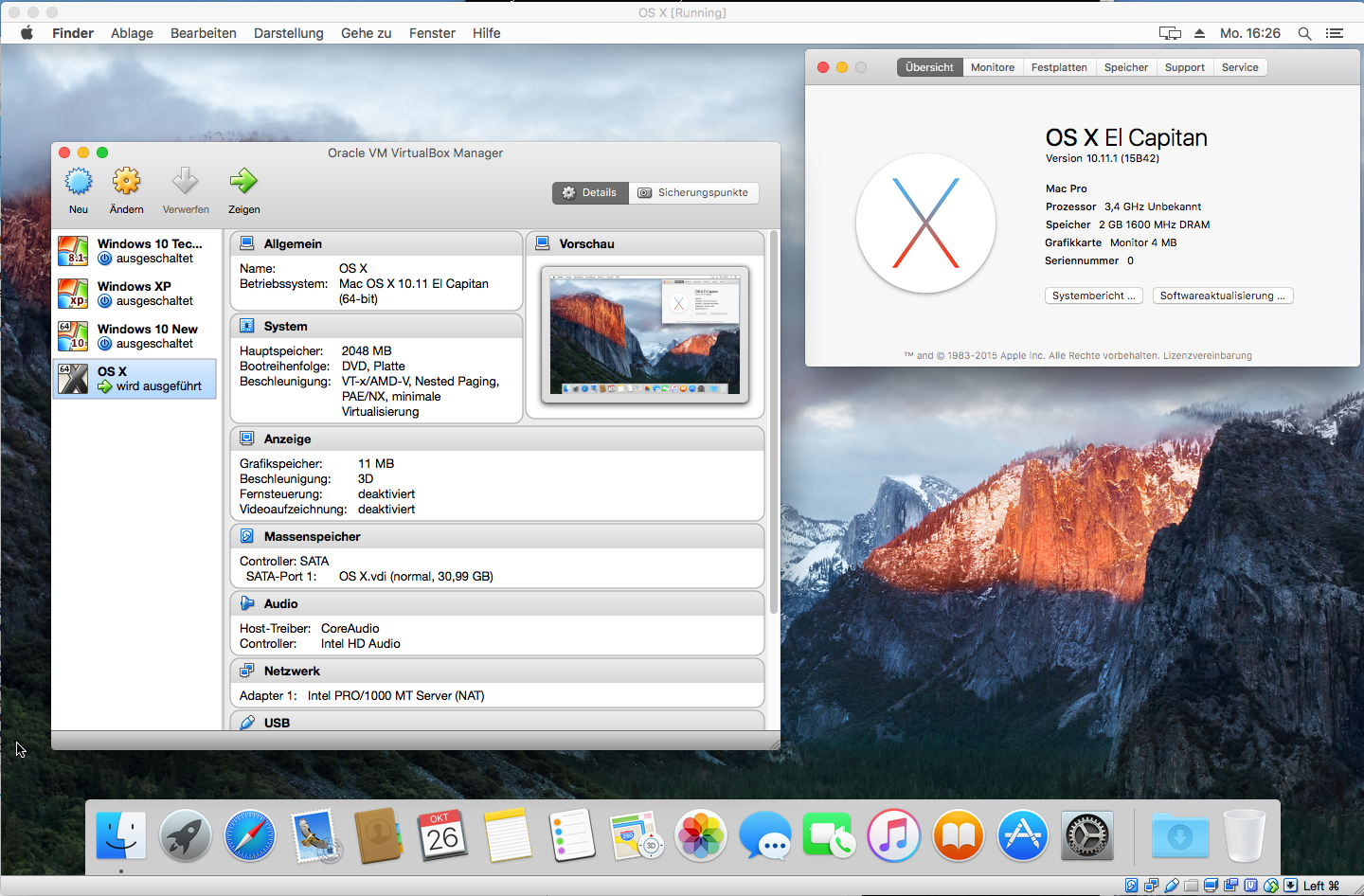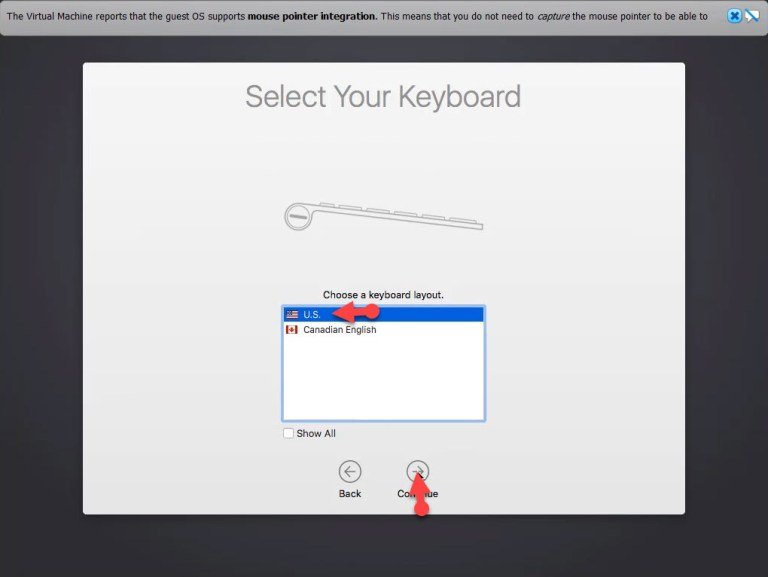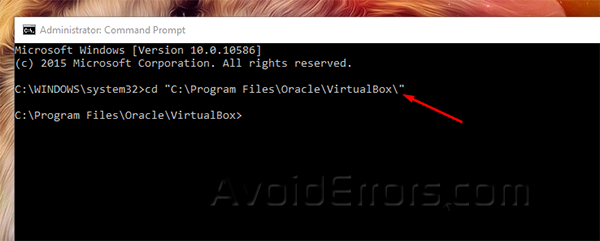
- #INSTALL OS X EL CAPITAN ON VIRTUALBOX MAC OS X#
- #INSTALL OS X EL CAPITAN ON VIRTUALBOX INSTALL#
- #INSTALL OS X EL CAPITAN ON VIRTUALBOX DOWNLOAD#
VBOX_PATH_APP_PRIVATE_ARCH = "/Applications/OpenSource/VirtualBox.app/Contents/MacOS" VBOX_PATH_APP_PRIVATE = "/Applications/OpenSource/VirtualBox.app/Contents/MacOS" If you like to change that, say into /Applications/OpenSource/VirtualBox.app/, you need to add the following to the LocalConfig.kmk:
#INSTALL OS X EL CAPITAN ON VIRTUALBOX INSTALL#
The default install directory of VirtualBox is /Applications/VirtualBox.app/. Hardening needs some additional configuration and post-build steps. Never disable hardening (see previous section) when creating packages for redistribution. Enter out/darwin.x86/release/dist/VirtualBox.app/Contents/MacOS/.Execute and make sure the modules loads successfully. These can be found in out/darwin.x86/release/dist along with a small script ( loadall.sh) to load them.


This step only has to be done once (if something changes in your build tool setup, you might have to repeat it but keep in mind that both output files will be overwritten). Also, it will create an environment setup script called env.sh. If it finds everything it needs, it will create a file called !AutoConfig.kmk containing paths to the various tools on your system. You can manually set the target architecture with -target-arch=x86 or amd64, if some architecture related problems occur.
#INSTALL OS X EL CAPITAN ON VIRTUALBOX MAC OS X#

The reason this works is that the installer package on the disk image and the actual macOS installer bypass the model check if they detect they are running inside a VM. Once you have the Mojave VM, you can open the El Captain "InstallMacOSX.dmg" file from inside that VM and run the installer, which creates the "Install OS X El Capitan" application, copy that application out to the host then use it to create your El Capitan VM (and delete the temp Mojave VM if you don't need it for anything else).
#INSTALL OS X EL CAPITAN ON VIRTUALBOX DOWNLOAD#
You can download the Mojave installer from Apple's support page (it comes as an application, not a disk image, so it can be used directly to create the Mojave VM).

If you don't have access to a suitable older Mac model, the workaround is to create a temporary VM for a later macOS which your Mac is able to run, e.g. If your iMac is a 2017 or later model, then it is too new to run El Capitan, so the installer package inside the disk image will refuse to proceed. The catch is that you can only do this on a Mac which is able to boot El Capitan. That application is the file you need to create an El Capitan VM. dmg in macOS and run the installer package inside it, which will create an "Install OS X El Capitan" application in your Applications folder. The key detail is that you can't use that InstallMacOSX.dmg file to create a VM. This problem has come up before and I gave a more detailed answer at the time.


 0 kommentar(er)
0 kommentar(er)
